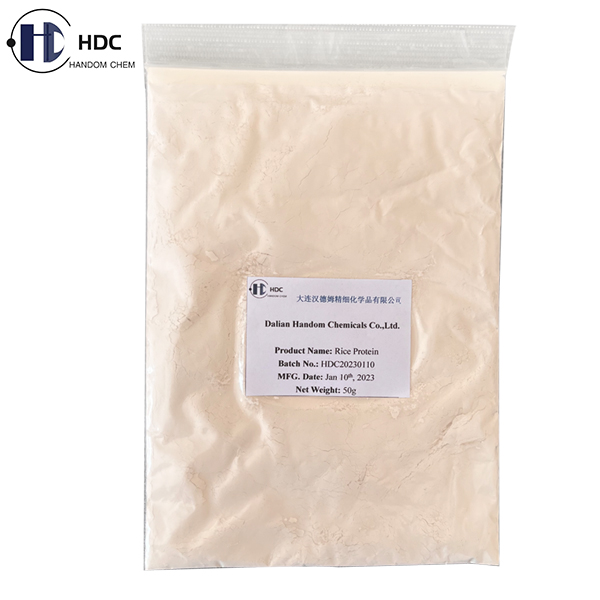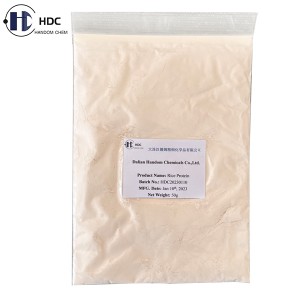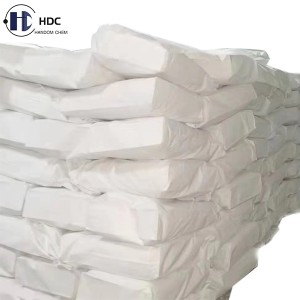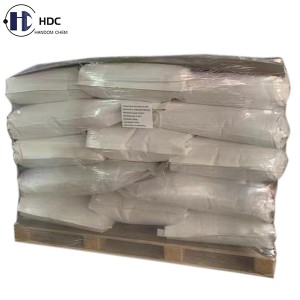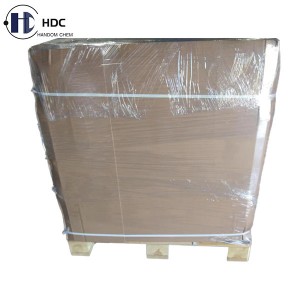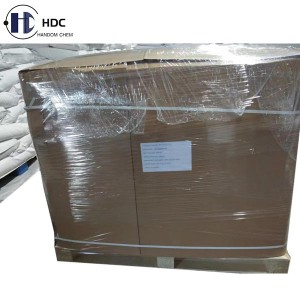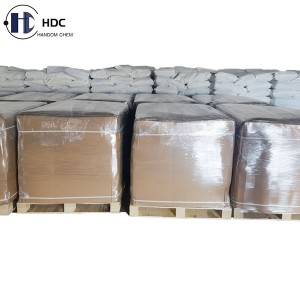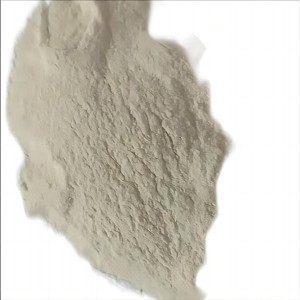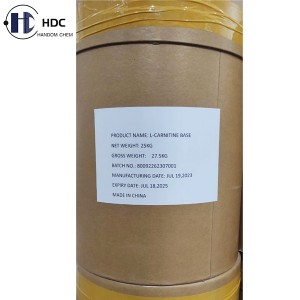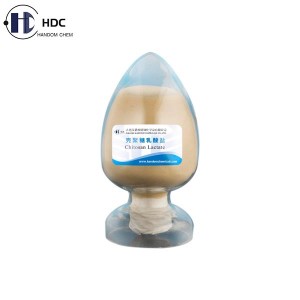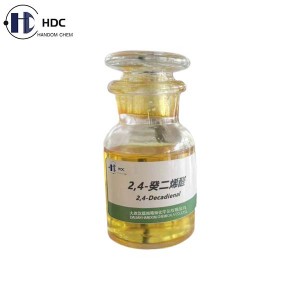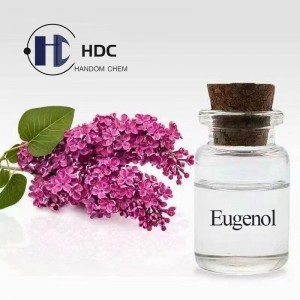Rice Protein
HS Code
3504009000
Packaging
20kg per bag(Net Weight), the inner bag is PE plastic bag, and the outer bag is paper-plastic composite bag.
Storage Conditions
The product has to be stored in its unopened original packages in a cool dry place before using, free from odours, insects and rodents. It can be stored for 24 months under these conditions.
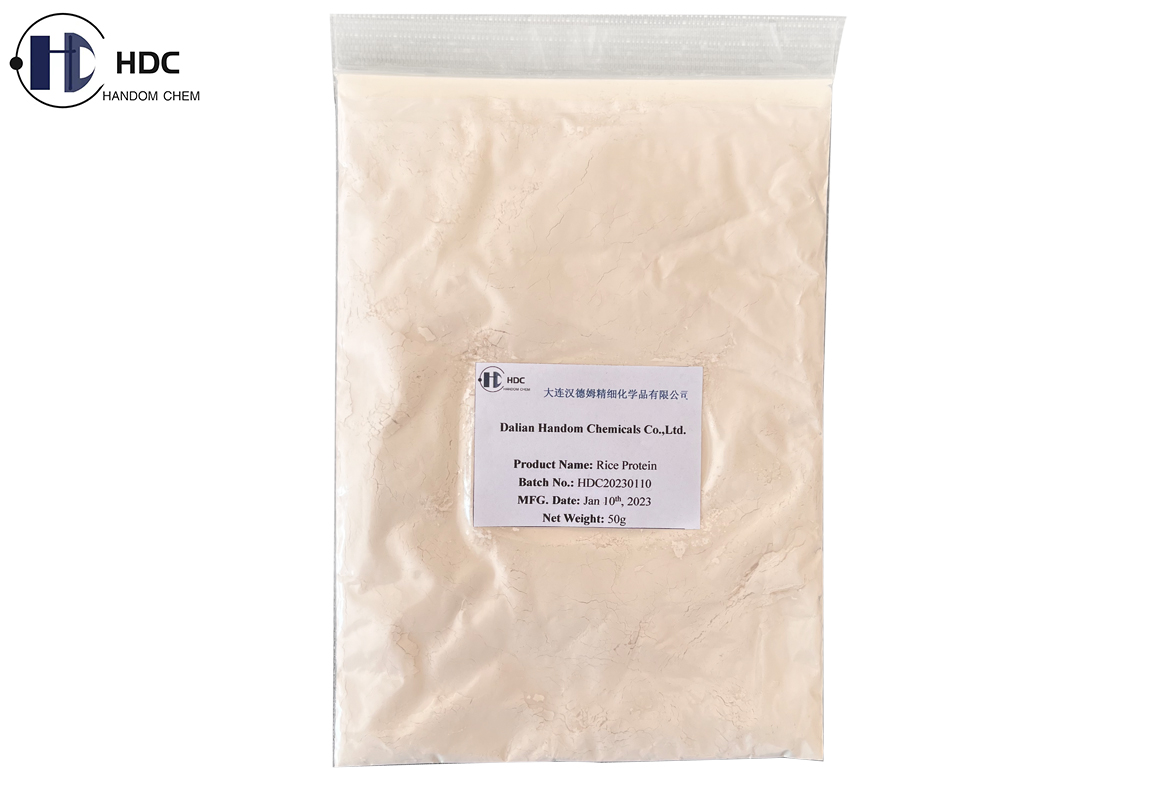
| Organoleptic Evaluation | Description |
| Color & Taste | Off-white powder, uniformity and relax, no agglomeration or mildew, no foreign matters with naked eyes |
| Fineness | 40 mesh, 80 mesh, 300 mesh or as per customer’s requirements |
| Test Item | Unit | Specification | Test Method |
| Protein(On dry basis) | % | ≥80.0 | GB 5009.5-2016 |
| Fat(On dry basis) | % | ≤8.0 | GB 5009.6-2016 |
| Moisture | % | ≤8.0 | GB 5009.3-2016 |
| Ash(On dry basis) | % | ≤6.0 | GB 5009.4-2016 |
| Fiber(On dry basis) | % | ≤7.0 | GB 5009.10-2013 |
| Total Carbohydrate | % | ≤8.0 | GB 28050-2011 |
| Total Sugar | % | ≤2.0 | GB 5009.8-2016 |
| Heavy Metals | ppm | ≤10.0 | BS EN ISO 17294-2 2016 mod |
| Lead(Pb) | ppm | ≤0.3 | BS EN ISO 17294-2 2016 mod |
| Arsenic(As) | ppm | ≤0.3 | BS EN ISO 17294-2 2016 mod |
| Cadmium(Cd) | ppm | ≤0.3 | BS EN ISO 17294-2 2016 mod |
| Mercury(Hg) | ppm | ≤0.05 | BS EN ISO 17294-2 2016 mod |
| Melamine | ppm | ≤0.1 | FDA LIB No.4421 modified |
| Cyanuric acid | ppm | ≤0.5 | FDA LIB No.4421 modified |
| Irradiation | --- | Negative | En 13751:2009 |
| Benz(a)pyrene | ppb | ≤10 | GB 5009.265-2016 |
| PAH4 | ppb | ≤50 | GB 5009.265-2016 |
| Gluten allergen | ppm | ≤20 | ESQ-TP-0207 r-BioPharm ELIS |
| Soya allergen | ppm | ≤20 | ESQ-TP-0203 Neogen 8410 |
| GMO(Bt63) | % | ≤0.01 | Real-time PCR |
| Aflatoxin B1 | ppb | ≤2.0 | DIN EN 14123.mod |
| Aflatoxin B1+B2+G1+G2 | ppb | ≤4.0 | DIN EN 14123.mod |
| Ochratoxin A | ppb | ≤3.0 | DIN EN 14132.mod |
| Total plate count | CFU/g | ≤5000 | GB 4789.2-2016 |
| Moulds & Yeast | CFU/g | ≤50 | GB 4789.15-2016 |
| Coliforms | CFU/g | ≤30 | GB 4789.3-2016 |
| Escherichia coli | CFU/g | Negative | GB 4789.38-2012 |
| Salmonella | /25g | Negative | GB 4789.4-2016 |
| Staphylococcus aureus | /25g | Negative | GB 4789.10-2016 |
| Listeria monocytogenes | /25g | Negative | GB 4789.30-2016 |
Application
Research on rice protein in China and abroad mainly includes food additives that improve the physical and chemical functions of food; natural thickeners and foaming agents for cleaning products; high-protein nutritional powders for special populations; bioactive peptides that meet specific functions; Active ingredients for health care; protein feed for livestock and poultry production; green and environmentally friendly edible films, etc.
1. Food Additives:
Food additives are a class of additives that can improve food quality and color, aroma and taste. Appropriate molecular size and amino acid composition will endow proteins with certain physical and chemical properties, such as solubility, foamability, emulsification, etc. Rice protein is easier to dissolve in water and concentrate at the air-liquid interface under the hydrophobic, flexible and disordered structure, showing foaming and emulsifying properties.
2. Protein Nutritional Supplements:
Because of its hypoallergenic and high nutritional properties, rice protein has become the preferred plant protein for nutritional supplementation of special populations. Rice protein formula rice flour can be used for sensitive diarrhea of infants and young children; gluten-free rice protein is more suitable for people with wheat intolerance, allergies or celiac disease; rice protein concentrate can reduce normal protein intake or improve digestive function. When it is damaged, it can better replenish the body's ability to maintain nitrogen balance; and it can assist in the treatment of peptic ulcer, trauma, etc.
3. Development of Functional Peptides:
Modern research shows that amino acid residues in small molecular peptides are easier to be digested and absorbed by the human body than free amino acids. Amino acids in the form of small molecular peptides can not only avoid transport competition, but also reduce the toxic side effects of high concentrations of amino acids. The peptide transport system consumes less energy and is not easily saturated, making the research on hydrolyzed protein products to obtain active peptides popular.
4. Feed Industry:
Rice protein powder, the by-product of starch sugar production from rice, is an excellent feed raw material with high protein content, fast energy conversion, high digestibility, good palatability, good disease resistance, low antigenicity, and balanced amino acids. Adding rice gluten concentrate in aquatic feed can not only improve the digestion performance of fish, but also control its excretion, so as to keep the water quality clear and control water pollution. Rice proteolysis can produce flavor peptides instead of monosodium glutamate (MSG), which can effectively mask the bitterness, enhance the viscosity of the feed and improve the palatability of the feed, and can chelate trace elements and minerals. At the same time, it is safe and harmless.


